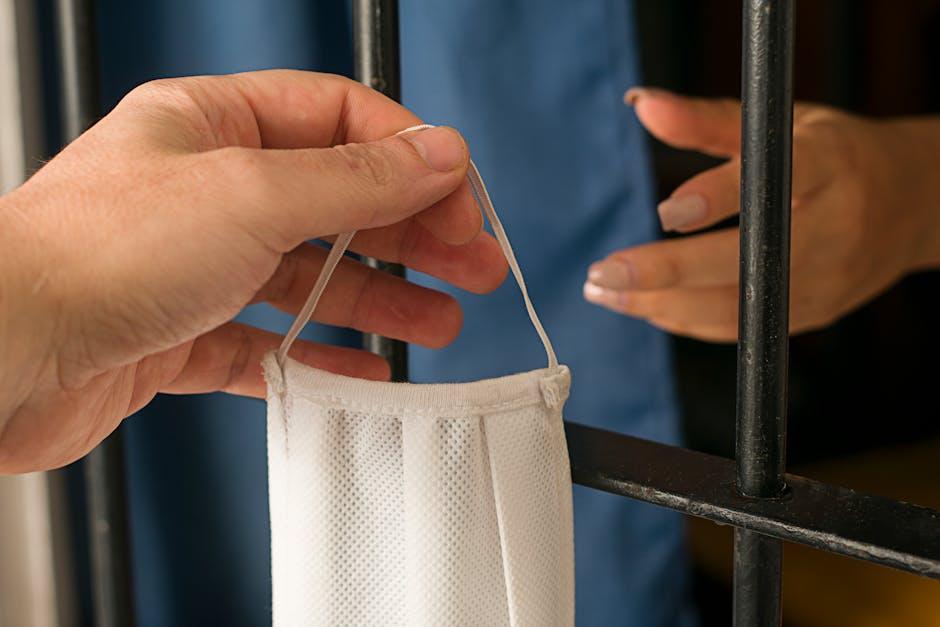Imagine your car as a finely tuned orchestra, where every part plays its role to create a smooth, harmonious ride. Among these components, the transmission acts as the conductor, seamlessly coordinating the engine’s power and the wheels’ motion. But when the conductor falters, the whole performance can fall out of sync. Transmission problems often start subtly, whispering their presence before growing into loud, undeniable symptoms. Recognizing these signs early can save you from costly repairs and keep your journey running smoothly. In this article, we’ll explore the key indicators that your vehicle’s transmission may be in trouble, helping you stay ahead of the road ahead.
Table of Contents
- Common Symptoms Indicating Transmission Troubles
- How Unusual Noises Reveal Transmission Issues
- The Role of Fluid Leaks in Diagnosing Transmission Problems
- Impact of Gear Slippage on Vehicle Performance
- Effective Maintenance Tips to Prevent Transmission Damage
- When to Seek Professional Help for Transmission Repairs
- Q&A
- The Way Forward

Common Symptoms Indicating Transmission Troubles
When your vehicle starts exhibiting odd behaviors, it’s often a hint that the transmission might be struggling. Drivers commonly notice unexpected slipping between gears, which can make acceleration feel jerky or delayed. Another prominent sign is a burning smell coming from your car, which could indicate transmission fluid overheating or degradation. Similarly, difficulty in shifting gears smoothly or a newfound resistance when changing from park to drive are red flags that shouldn’t be ignored. These symptoms usually point to issues that require immediate attention to avoid further damage.
Alongside these, unusual noises like whining, humming, or clunking from underneath the vehicle are also warning signs. It helps to be aware of how your transmission behaves, as problems might not always be glaringly obvious. Below is a quick overview of common symptoms to keep on your radar:
- Delayed gear engagement when moving from a stop
- Frequent gear slipping during acceleration
- Fluid leaks beneath the vehicle
- Unusual noises during driving
- Warning lights illuminated on the dashboard
| Symptom | Potential Cause | Impact |
|---|---|---|
| Gear slipping | Worn clutch plates | Loss of power, jerky acceleration |
| Delayed engagement | Low transmission fluid | Increased wear, overheating |
| Transmission noise | Damaged bearings | Potential transmission failure |

How Unusual Noises Reveal Transmission Issues
Unusual noises coming from your vehicle often serve as the first clue that the transmission is struggling. Clicking, grinding, or whining sounds when shifting gears indicate that the internal components are not meshing smoothly. These sounds might occur during acceleration, deceleration, or even when the vehicle is idling. Pay special attention to:
- Grinding noises – often a sign of worn gears or low transmission fluid.
- Whining sounds – may point to failing transmission bearings or pump issues.
- Clunking or banging – could indicate severe internal damage or loose parts.
To help you interpret these symptoms effectively, here’s a quick reference table summarizing common noises, the potential transmission issue, and recommended actions:
| Noise Type | Possible Cause | Suggested Action |
|---|---|---|
| Grinding | Worn gears or low fluid | Check fluid; consult mechanic |
| Whining | Faulty bearings | Inspect transmission pump |
| Clunking | Internal damage | Immediate diagnostics recommended |

The Role of Fluid Leaks in Diagnosing Transmission Problems
One of the most telling indicators of transmission issues can be found beneath your vehicle. Fluids leaking from the transmission system not only signal potential internal damage but also directly affect the transmission’s ability to function properly. The color, consistency, and smell of the fluid are valuable clues. Transmission fluid typically appears bright red and has a sweet smell, whereas dark, burnt-smelling fluid may indicate overheating or worn components. Spotting puddles or drips on your driveway or garage floor should never be ignored, as it often points to seals or gaskets that have deteriorated or cracked.
When diagnosing transmission problems, attention to specific characteristics of leaking fluid can expedite pinpointing the root cause:
- Red, clear fluid: Normal transmission fluid, possible slight seepage.
- Brown or dark fluid: Old or burnt fluid indicating wear.
- Thick or gritty texture: Presence of debris inside transmission.
- No fluid leakage: Transmission issues may be mechanical or electronic.
| Fluid Condition | Possible Cause | Recommended Action |
|---|---|---|
| Bright Red & Clear | Normal, slight seepage | Monitor fluid levels regularly |
| Dark Brown or Opaque | Overheating, old fluid | Flush and replace transmission fluid |
| Burnt Smell & Thick | Internal damage or wear | Immediate professional inspection |
| Absence of Leaks | Mechanical or sensor issues | Diagnostic scan and fluid pressure test |

Impact of Gear Slippage on Vehicle Performance
Experiencing gear slippage can drastically alter the driving experience, often leading to unpredictable vehicle behavior. When gears don’t engage properly, the engine may rev without corresponding acceleration, causing a frustrating lag or hesitation on the road. This not only compromises your vehicle’s performance but can also cause excessive wear on internal transmission components, ultimately risking costly repairs if ignored. Common telltale signs include sudden loss of power, delayed gear engagement, or strange noises when shifting, all of which indicate a transmission struggling to function as intended.
Key symptoms of gear slippage include:
- Unexpected changes in engine RPM without acceleration
- Burning smell from the transmission fluid
- Vehicle jerking during shifts
- Warning lights on the dashboard, such as the check engine light
| Symptom | Impact on Performance | Urgency |
|---|---|---|
| Engine revving without speed increase | Reduced acceleration, inefficient fuel usage | High |
| Delayed gear engagement | Transmission lag, potential for stalling | Medium |
| Burning smell | Overheating transmission, possible fluid leak | High |

Effective Maintenance Tips to Prevent Transmission Damage
Maintaining your transmission isn’t just about reacting to problems—it’s about consistent care that keeps your vehicle running smoothly. Regularly checking and replacing transmission fluid is crucial, as it lubricates the moving parts and prevents overheating. Be sure to use the manufacturer-recommended type and change it according to the service schedule. Also, give attention to the transmission filter; a clogged filter can restrict fluid flow, causing inefficient performance or damage. Simple habits like gently shifting gears and avoiding sudden stops can also extend the lifespan of your transmission significantly.
Additional preventive practices include:
- Inspecting transmission seals for leaks to avoid fluid loss
- Keeping an eye on transmission temperature with diagnostic tools
- Scheduling routine professional transmission inspections
- Flush the transmission fluid periodically for a clean system
| Maintenance Task | Recommended Frequency |
|---|---|
| Transmission Fluid Check | Every 30,000 miles |
| Transmission Fluid Replacement | Every 60,000 miles |
| Transmission Filter Change | Every 60,000 miles |
| Professional Inspection | Annually |

When to Seek Professional Help for Transmission Repairs
At the first hint of irregularities, don’t hesitate to connect with a trusted transmission specialist. Persistent slipping gears, unusual noises such as whining or clunking, and noticeable delays in acceleration are critical signals that your transmission system needs expert diagnosis. Ignoring these warnings can result in costly repairs that might have been prevented if addressed early. Professional mechanics can perform thorough inspections using advanced diagnostic tools to pinpoint the issue accurately and recommend timely interventions.
Some obvious indicators that quickly warrant professional attention include:
- Fluid leaks underneath the vehicle, especially reddish or brownish fluid
- Burning smells emanating from the transmission area
- Dashboard warning lights related to transmission or engine performance
- Shifting difficulties, such as hard shifts or inability to shift gears
When in doubt, a quick consultation with a certified transmission repair technician can save you time, money, and frustration down the road. The following table gives a quick checklist to help decide when immediate professional care is essential:
| Symptom | Urgency Level | Recommended Action |
|---|---|---|
| Fluid leak visible | High | Visit a repair shop immediately |
| Delayed gear engagement | Moderate | Schedule a diagnostic check soon |
| Dashboard light on | High | Get professional scanning & evaluation |
| Strange noises during shifting | Moderate | Consult a technician without delay |
Q&A
Q&A: Unraveling the Signs of Transmission Problems
Q1: What are some early warning signs that my vehicle might have transmission problems?
A: Keep an ear out for unusual noises such as whining, clunking, or buzzing when shifting gears. Early signs also include delayed or rough gear changes and a burning smell, which can hint at overheated transmission fluid.
Q2: How does slipping transmission manifest, and why is it a concern?
A: Transmission slipping happens when your car unexpectedly changes gears or loses power while driving. It’s like your car is “forgetting” which gear it’s supposed to be in. This can lead to reduced performance and potential safety hazards.
Q3: Is it normal for my car to hesitate or jerk during acceleration?
A: Hesitation or jerking can signal transmission trouble. This occurs when the transmission struggles to shift smoothly, potentially due to worn parts, low fluid, or other internal issues.
Q4: Can transmission fluid leaks be a sign of bigger problems?
A: Absolutely. Transmission fluid leaks not only lower fluid levels essential for smooth operation but can also indicate damaged seals or hoses, leading to serious mechanical failures if ignored.
Q5: Should the “Check Engine” or transmission warning light on my dashboard be taken seriously?
A: Yes, these lights can alert you to transmission malfunctions. While not every warning means disaster, it’s wise to have your vehicle inspected promptly to prevent escalating damage.
Q6: What does a grinding or shaking sensation mean when shifting gears?
A: Grinding or shaking can mean the gears aren’t meshing properly, often due to worn synchronizers or low transmission fluid. This symptom signals that immediate attention may be necessary.
Q7: How important is regular maintenance in preventing transmission problems?
A: Vital. Routine transmission fluid changes, inspections, and prompt repairs can extend your vehicle’s life and keep shifting smooth, saving you from costly repairs down the road.
Q8: If I notice one or more of these signs, what’s the best course of action?
A: Don’t delay. Schedule a diagnostic check with a trusted mechanic who can accurately identify issues and recommend repairs before a minor problem becomes a major breakdown.
Understanding your transmission’s language helps you respond before trouble grows—smooth rides start with attentive listening!
The Way Forward
Recognizing the signs of transmission problems early can save you from costly repairs and unexpected breakdowns down the road. By staying attentive to your vehicle’s behavior and addressing issues promptly, you safeguard not only your car’s performance but also your peace of mind on every journey. Remember, your transmission is the heart of your vehicle’s power flow—treat it with care, and it will keep you moving smoothly for miles to come.


2 Comments
cyfp99
cyfp99